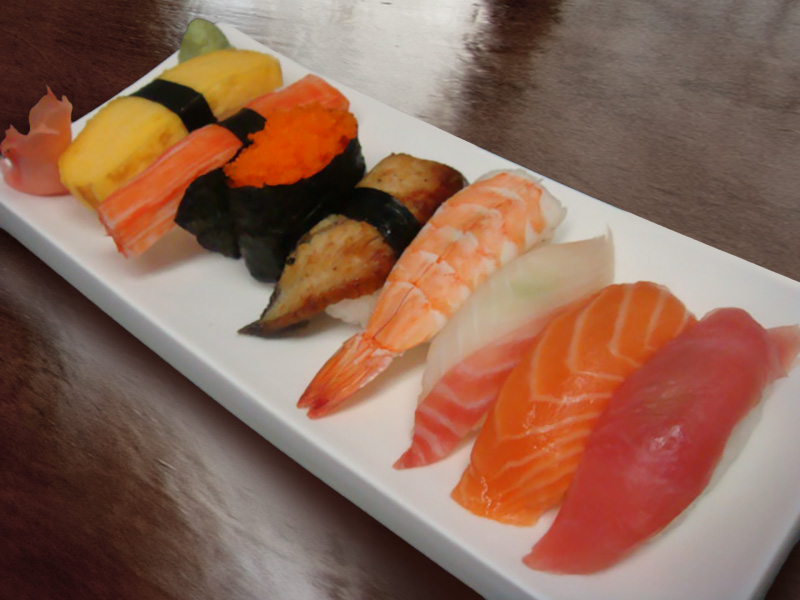'Sushi' in Japanese name 壽司 寿司 Transcriptions sushi Sushi ( すし, 寿司, 鮨, pronounced or ) is a of prepared vinegared rice ( 鮨飯, sushi-meshi), usually with some sugar and salt, accompanying a variety of ingredients ( ネタ, neta), such as, vegetables, and occasionally. Styles of sushi and its presentation vary widely, but the one key ingredient is 'sushi rice', also referred to as shari ( しゃり), or sumeshi ( 酢飯). The term sushi is no longer used in its original context; it literally means 'sour-tasting'. Sushi is traditionally made with, though it can be prepared with. It is very often prepared with seafood, such as,,. Many types of sushi are.
Nigiri Sushi in Franklin Lakes, Franklin lakes Nigiri Sushi, New Jersey Nigiri Sushi Restaurant, Nigiri Special Roll, Party Platter, Sushi Special Roll, Happy Hour. For the uninitiated, the world of sushi can seem rather intimidating. Sushi restaurant menus present a staggering number of different rolls and ordering options,.
It is often served with ( gari),,. Or ( takuan) are popular for the dish. Sushi is sometimes confused with, a related dish in Japanese cuisine that consists of thinly sliced, or occasionally, and an optional serving of rice.
Sushi by in Sushi originates in a dish, known today as ( 馴れ寿司, 熟寿司 – 'salted fish'), stored in fermented rice for possibly months at a time. The lacto-fermentation of the rice prevented the fish from spoiling; the rice would be discarded before consumption of the fish. This early type of sushi became an important source of protein for its Japanese consumers. The term sushi comes from an antiquated grammatical form no longer used in other contexts, and literally means 'sour-tasting'; the overall dish has a and or savoury taste. Narezushi still exists as a regional specialty, notably as funa-zushi from.
Osaka-style sushi, also called 'Oshi-zushi' or 'hako-sushi' Vinegar began to be added to the preparation of narezushi in the (1336–1573) for the sake of enhancing both taste and preservation. In addition to increasing the sourness of the rice, the vinegar significantly increased the dish's longevity, causing the fermentation process to be shortened and eventually abandoned.

The primitive sushi would be further developed in, where over several centuries it became oshi-zushi or 'hako-zushi'; in this preparation, the seafood and rice were pressed into shape with wooden (typically bamboo) molds. It was not until the (1603-1868) that fresh fish was served over vinegared rice and nori. The particular style of today's nigirizushi became popular in (contemporary Tokyo) in the 1820s or 1830s.
One common story of nigirizushi's origins is of the chef Hanaya Yohei (1799-1858), who invented or perfected the technique in 1824 at his shop in. The dish was originally termed Edomae zushi as it used freshly caught fish from the Edo-mae (Edo or ); the term Edomae nigirizushi is still used today as a by-word for quality sushi, regardless of its ingredients' origins.
Download conflict vietnam. The mistakenly notes the earliest written mention of sushi in English in an 1893 book, A Japanese Interior, where it mentions sushi as 'a roll of cold rice with fish, sea-weed, or some other flavoring'. However, there is an earlier mention of sushi in 's Japanese-English dictionary from 1873, and an 1879 article on Japanese cookery in the journal. Chirashizushi with raw ingredients Chirashizushi ( ちらし寿司, 'scattered sushi', also referred to as barazushi) serves the rice in a bowl and tops it with a variety of raw fish and vegetable garnishes. It is commonly eaten because it is filling, fast and easy to make.